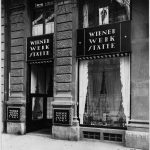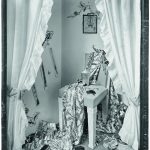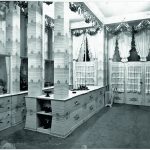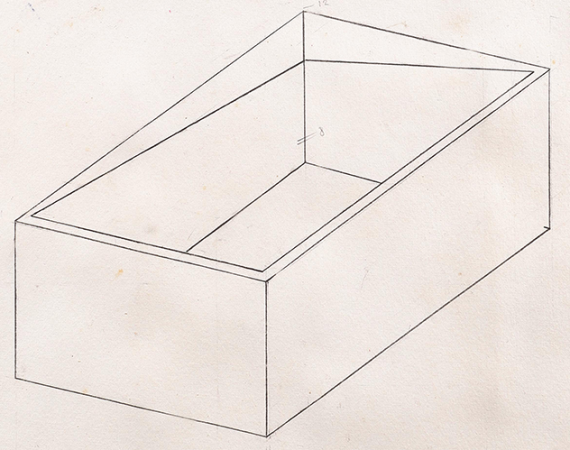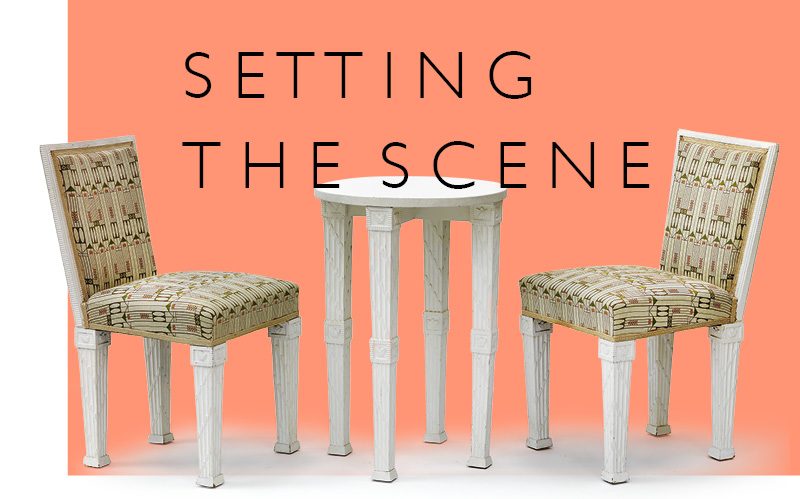
Dagobert Peche, Three-part seating set, 1917 design for the WW Zurich branch, estimate € 40,000 – 60,000
Wiener Werkstätte artist Dagobert Peche was more than just a “genius of ornamentation”. His furnishings, which also graced the Wiener Werkstätte salesroom in Zurich, are both monumental and dainty, theatrical and intimate. A three-part seating set will be the highlight of the upcoming Art Nouveau auction.
From Vienna to New York, Berlin and Zurich: the Wiener Werkstätte (WW) produced art as craft and craft as art for the international cosmopolitan early 20th-century clientele. Dagobert Peche, member of the WW and head of their Zurich branch from 1917 to 1919, did not follow suit on the utilitarian style propagated by Otto Wagner. Instead, he had a defining influence on the scenic-romantic style of the heyday of WW, which began in 1915. Author Berta Zuckerkandl even described him as “the greatest genius of ornamentation Austria has seen since the Baroque”. The three-part seating set coming up for auction in May is a good example of Peche’s work.
With the old world in turmoil and society changing, the era around 1900 was full of contradictions, and so was the art that reflected the times. On the one side there was an urge to destroy ornamentation, the kitsch of the age, and on the other, a desire for complete and pure utility. The WW was founded by Josef Hoffmann and Koloman Moser. Its products nicely illustrated the beliefs of upper class society in regard to arts and crafts, everyday life and reality, utility and decoration.
Dagobert Peche both designed and managed the newly founded Zurich WW branch in Bahnhofstrasse, which was set to become the artery of the new city and modelled on a French boulevard. He created a space that, as a contemporary described it, exuded “a foreign festiveness, a mixture of exclusive elegance and pastoral gaiety”.
If the facade was reminiscent of Hoffmann’s branch in Vienna, the structure of the interior space was shaped by Peche’s own concept of decoration. The naturalistic decor seemed to take on a life of its own, with flowers, leaves and materials detached from their medium and spreading into the room. Peche, unlike Hoffmann, allowed ornamentation to stand for itself. It defined the object, in fact it was the object.
Dagobert Peche structured the salesroom like a stage. On the one hand, he played with airy curtains and artificial flower garlands, simulating a sense of lightness and open space, while at the same time structuring the space architecturally, dividing it into blocks with pilaster strips, columns and epistyles. The space and its furniture provided a stage for the goods, an ideal Showroom.
Zurich became the seat of many intellectual Europeans in the early stages of the First World War. Thomas Mann, James Joyce and Stefan Zweig, for example, found their exile in Zurich. Speaking of seats: it is fair to say that the three-part seating set Dagobert Peche designed for the WW Zurich salesroom in 1917 was an iconic ensemble of furniture. Carved from wood, painted white, upholstered and covered in fabric from Backhausen, the two chairs and round table would serve many great contemporary minds as seating accomodation (though probably not Lenin, who left Zurich in April 1917).
The ensemble illustrates Peche’s study of different styles including Rococo and Biedermeier. He liked to paint his furniture in primary colours and set accents with colourful decorative fabrics. Monumental on the one hand, but also light, dainty and playful.
With this seating set created in Zurich, Dagobert Peche, textile expert at the WW and designer of beautiful ornaments, shaped the fabric of time in terms of decoration.
___
Marie-Sophie Engel is art historian at Dorotheum.

